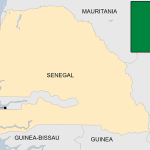
WHO Predicts 5.1 Million Shortfall in Nurses, Midwives by 2030

The World Health Organisation (WHO) has predicted a shortfall of 4.8 million nurses and 0.31 million midwives by 2030, despite the current presence of 29 million nurses and 2.2 million midwives worldwide.
This shortage is particularly acute in Africa, Southeast Asia, the Eastern Mediterranean, and parts of Latin America, as highlighted in the WHO statement for the 2024 International Nurses Day, ‘Our Nurses. Our Future. The economic power of care’.
The global health body described nurses and midwives as the backbone of healthcare systems, influencing policies, driving primary care, and essential for emergency response.
Stressing that nurses and midwives are crucial for emergency response and the overall sustainability of healthcare, WHO also noted that women comprise a significant portion of the healthcare workforce, with 67 per cent in the health and social sector compared to 41 per cent across all employment sectors.
With women comprising a significant majority of the healthcare workforce, WHO stressed that investing in nurses and midwives is vital for global health outcomes, as evidenced by studies linking their presence to enhanced service coverage, increased life expectancy, and reduced infant mortality rates.
In its words, “Nursing and midwifery are particularly female-dominated professions. Over 80 per cent of the world’s nurses work in countries with only half the global population. Additionally, a significant number of nurses (one in eight) practice in a different country than where they were born or trained.
“A higher number of female nurses correlates with positive health outcomes. Studies show a positive association with health service coverage and life expectancy and a negative correlation with infant mortality.
“Investing in nurses and midwives is essential for building efficient, effective, and sustainable healthcare systems worldwide. By addressing the global nursing shortage, the world can ensure everyone can access quality healthcare.
“Investing in Nurses for a Healthier Future: The positive correlation between the number of female nurses and health outcomes underscores the importance of supporting this workforce.
“Studies show a link between higher levels of female nurses and improved health service coverage, life expectancy, and lower infant mortality rates.”
Read: Natural Hues, Deep Roots: Afrikastabel’s Sustainable Threads of Nigeria
About The Author
Related Articles
Burkina Faso Releases Detained Nigerian Aircrew After Unauthorised Landing
Burkina Faso has released eleven Nigerian military personnel who were detained after...
ByWest Africa WeeklyDecember 12, 2025AES, Togo and Chad Launch Strategic Energy Projects in Niamey
Ministers of Energy from the Alliance of Sahel States, alongside their counterparts...
ByWest Africa WeeklyDecember 12, 2025Senate Pleas Exemption from VIPs Security Withdrawal
The Nigerian Senate has appealed to President Bola Ahmed Tinubu to exempt...
ByJoshua ChuwangDecember 12, 2025US Peace Talks All for Nothing as Fighting Engulfs Eastern Congo and Rebels Advance
What was presented as a breakthrough moment of diplomacy has instead become...
ByWest Africa WeeklyDecember 11, 2025











